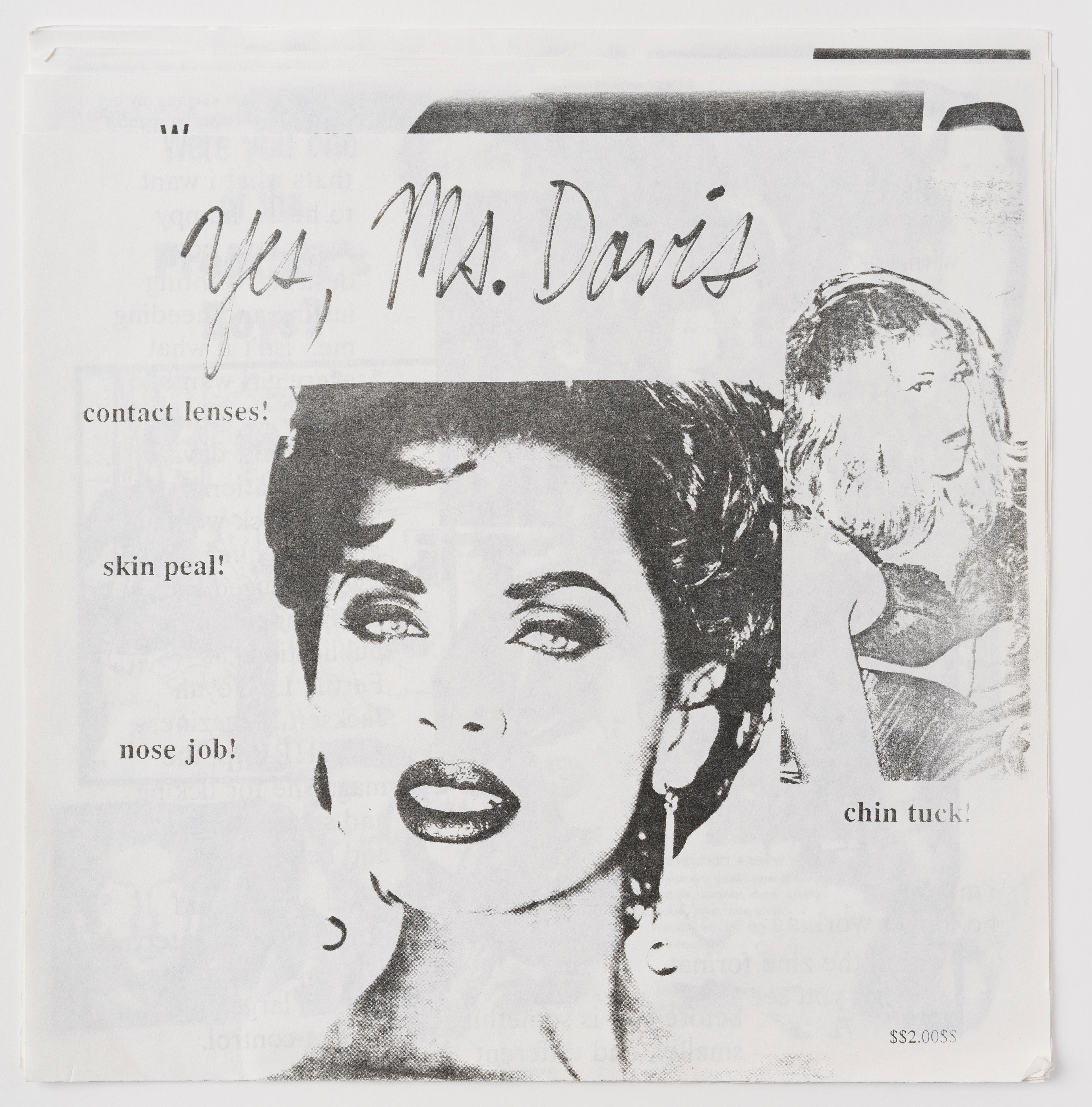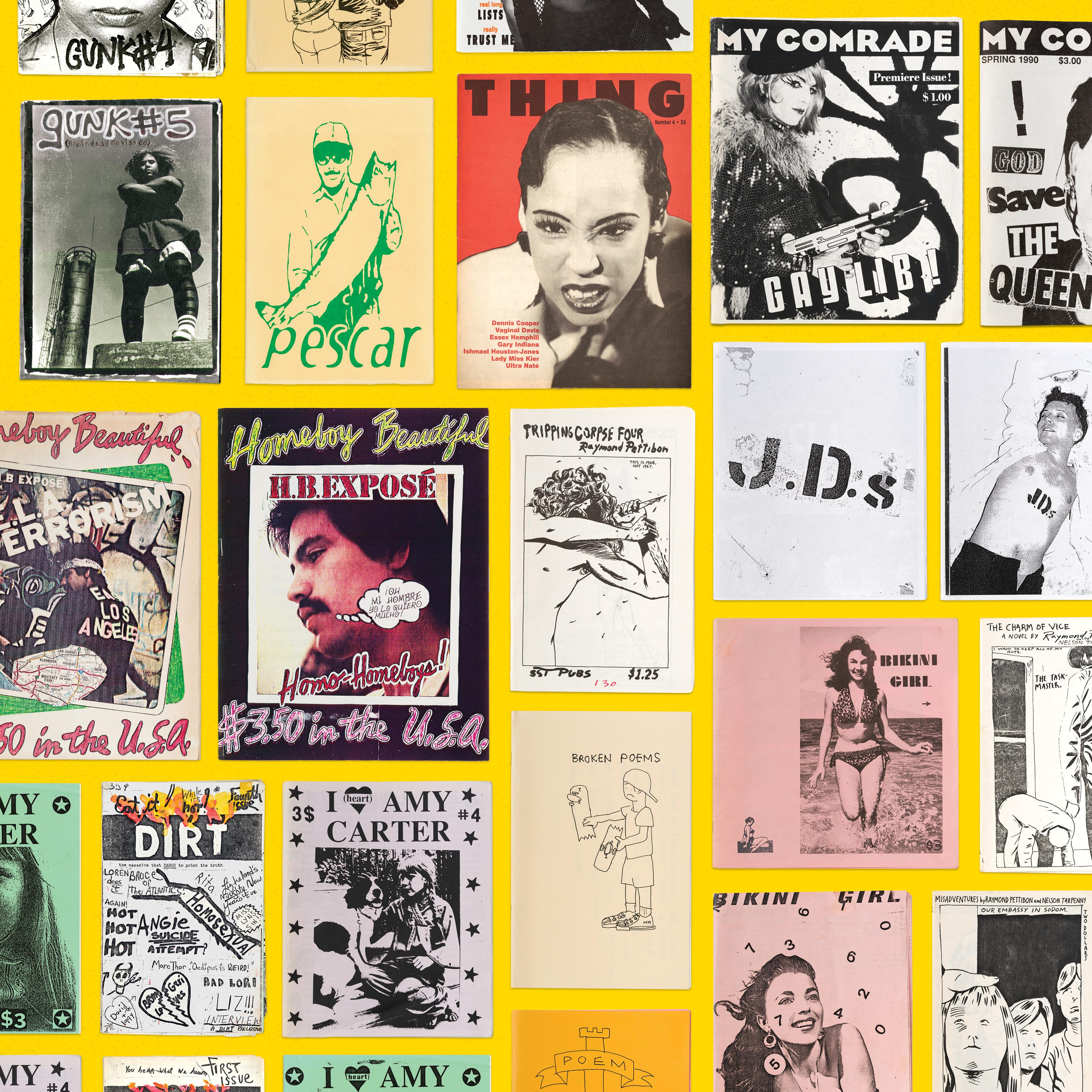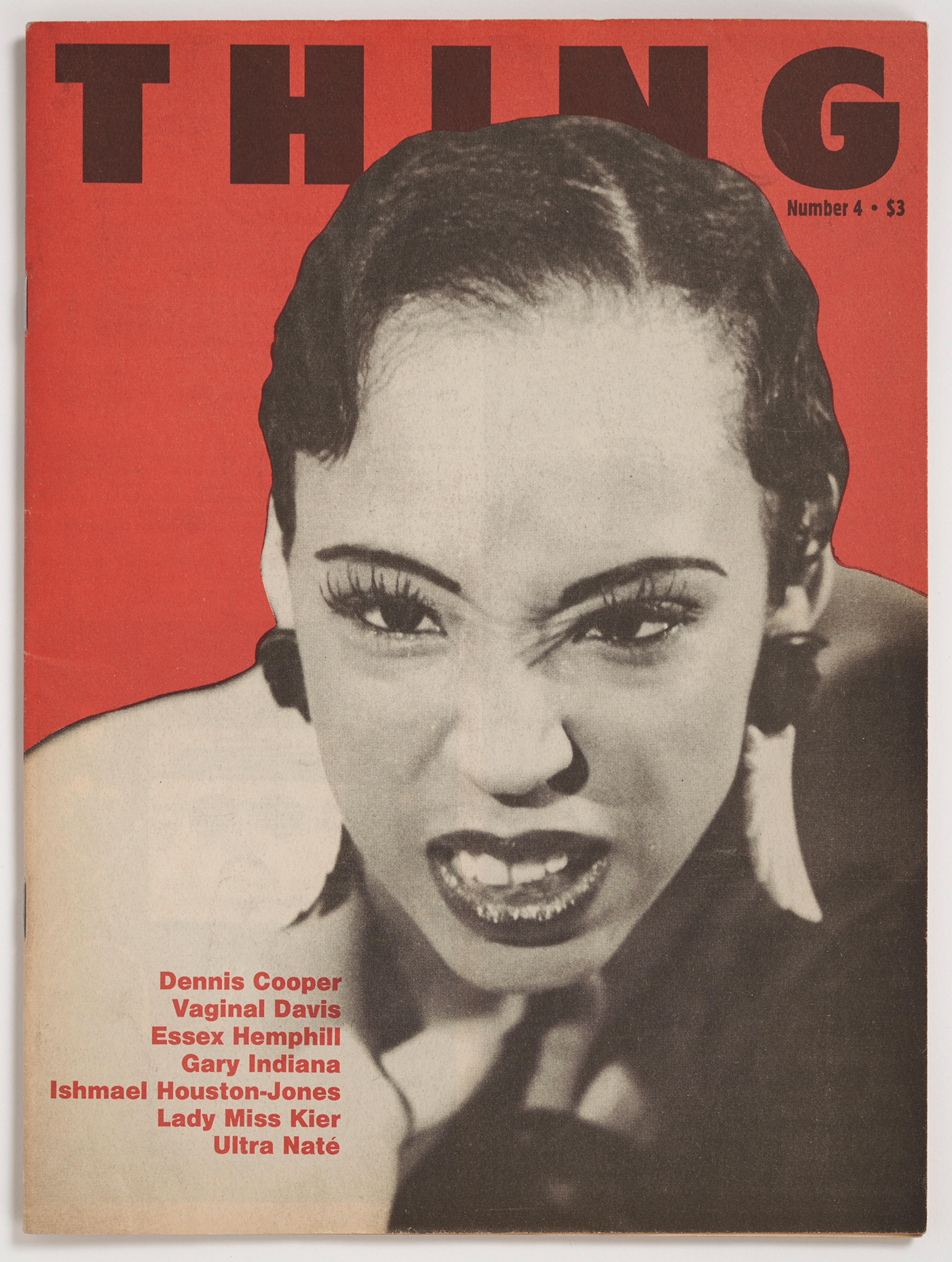Mimeograph, Wite-Out, and Full-Frontal Nudity: On the Birth of Queercore Zines

A conversation with artist and performer Vaginal Davis about the visual inspirations for her earliest work and friendships with other zine creators.
by Drew Sawyer
February 1, 2024
The artist and performer Vaginal Davis produced numerous zines in Los Angeles during the late 1980s and early 1990s but is most known for Fertile La Toyah Jackson Magazine. Named after a member of Davis’s band Afro Sisters and a play on the name of pop star La Toya Jackson, the zine appeared, according to Davis, “whenever Fertile becomes so indignant, so frustrated with the goings on of our critical times . . . that she feels it’s time for her to make comment.” With columns such as “What Makes Fertile La Toyah Mad?” and “La Toyah Talk,” the fanzine featured gossip, cruising stories, and performance and zine reviews.
Davis spoke with curator Drew Sawyer about the early days of zine production, the emergence of a queercore zine scene, and the inspirations behind Fertile La Toyah Jackson Magazine. Visit the Brooklyn Museum to see Copy Machine Manifestos: Artists Who Make Zines, which includes works by Davis, through March 31, 2024.
This interview has been edited for length and clarity.
How early zinesters met each other
When I was a small child, it was fairly common to have pen pals and to communicate with other children from around the world. And I was always interested in other people from around the world and carrying on correspondence. So that’s something that I’ve always done, writing letters via post, something that so few people do now. That’s always been a part of my art practice as well.
So [Canadian artist and zine publisher] G. B. Jones, she [wrote] me these really long, really lovely letters that were twenty to twenty-five pages long. We used to have a correspondence with each other. She would send me copies of her zine, I would send her copies of my zine. And even though we didn’t really meet each other till much later, I always felt like I knew her really well. And then [Canadian artist and zine publisher] Bruce LaBruce got jealous that G. B. was having such an intimate correspondence with me, so then he started writing me. But it first started between me and G. B. Jones.
With the emergence of the queercore zine scene, letter-writing was basically how everybody met each other and got to know each other. That was the starting point. . . . I didn’t even know that anyone else was doing anything similar to what I was doing. I had no idea. I was just working in my own bubble. And then I started to get copies of other zines being sent to me.
If you want something bad enough and you’re not really getting your needs met, you just put it out there and pretend that you’re getting it.
On creating her first zine
It was a little magazine that was done on a mimeograph machine that I stole from school. That was one of the earliest examples of making my own little independent publication, which is something that I started to do in elementary school.
All of my zines have been pretty much the same. They incorporate some poetry, some prose, some ranting about whatever happens to be on my mind. I pretty much follow the same format throughout.
They weren’t really called “zines” then; it was just making a little publication and mimeographing it. I loved the mimeograph machine because it had this purple ink and it smelled so good. I was quite intoxicated by the smell of the mimeograph machine.
On finding innovative ways to get things done
If you want something bad enough and you’re not really getting your needs met, you just put it out there and pretend that you’re getting it. And then that can lead to it actually happening.
That’s what happened to me.
I would go to my day job at UCLA’s Placement and Career Planning Center and then enlarge the type to make captions and headlines, and then photocopy the magazine, and have a little beer and pizza party and get together with my friends and then we’d staple the magazine together. But who would have ever thought that something that’s non-slick, that’s non-glossy, could ever get so much attention? It was absolutely unheard of.
You have to remember, this was way before desktop publishing. This wasn’t desktop publishing at all. This was cut and paste with spirit gum and glue sticks and sometimes tape and Wite-Out. That was our version of Photoshop in those days.
On visual inspirations
My inspiration for Fertile La Toyah Jackson was gossip magazines of the ’70s—teen fan magazines like Tiger Beat magazine and 16 Magazine, After Dark magazine. There was a magazine called Dance Magazine, and it featured a lot of male nudity, full-frontal male nudity, but under the guise of appreciating the ballet dancer’s body. [laughs] Those were the kinds of magazines that inspired me.
I loved Diva. That was a magazine that really, really inspired me. It also featured a lot of softcore photos of male celebrities nude, you know, and that was a big deal in the ’70s—a male TV star or film star would appear nude in Diva Magazine, like, “Oh my god, that was scandalous.”
[Today] everyone’s so guarded with their image and protective of their image; they have all these publicists and this and that, and all these people that represent them. Nothing happens spontaneously now. But back in the ’70s, a lot of things happened very spontaneously. It was a whole different era. Especially LA [from] the ’70s to about 1984—LA was so fascinating and so wild, people just walking down the street half-naked all the time. LA was pretty warm all the time, and people never really wore clothes. It was so sexy.
Drew Sawyer, Sondra Gilman Curator of Photography at the Whitney Museum of American Art (formerly Phillip and Edith Leonian Curator of Photography, Brooklyn Museum), is cocurator of Copy Machine Manifestos: Artists Who Make Zines.



